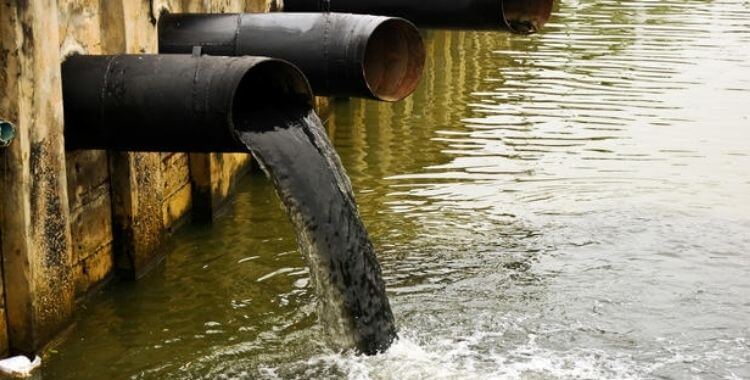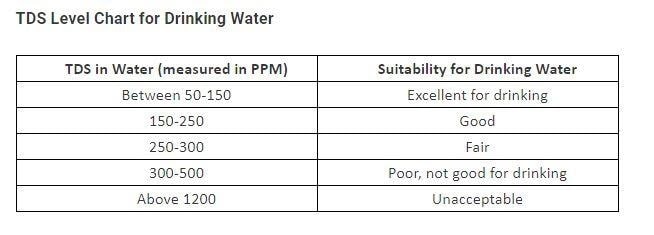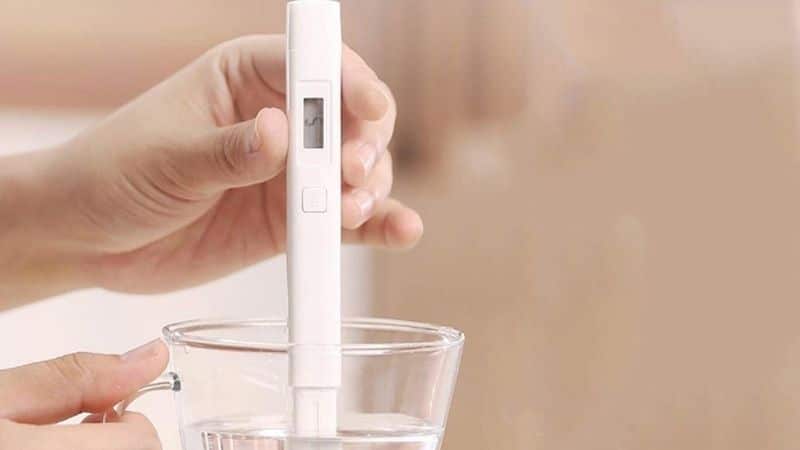A huge percentage of the world suffers from water shortage. You may wonder how come that’s possible when the earth is covered with 70% water bodies? Well, to everyone’s surprise, only 2% of the water is freshwaters which are drinkable and consumable by the habitants of earth. However, we all know that water is dissolvable in nature. As a result, it will dissolve anything and everything that is possible. In this way, the TDS level came into existence.
Table of Contents
What is TDS?
TDS or Total Dissolved Solution is popularly known as the concentration of inorganic as well as organic substances in the water. It’s basically anything that will mix with the water other than an H2O molecule. As a matter of fact, TDS in water is both natural and manmade. Salts, ions, metals, minerals, chemicals used for treating the municipal water make up for the TDS in water. However, not all soluble elements are good for human health. Therefore one must thoroughly check the TDS level before consuming any water.
What are the sources of TDS?
As discussed earlier, TDS are natural as well as manmade. It can either have a good impact or a bad impact on one’s health. But what are the sources? Well, let’s find out:

Natural Sources: We all know the source of any natural water and how it passes through different routes before it finally settles. Moreover, a huge percentage of the water flows underground. So, in the process, water tends to absorb all the minerals, potassium from rocks and even magnesium. On the other hands, hot springs and springs, in general, are very mineral-rich. It also dissolves valuable minerals from the springs and lakes. Lastly, you need to take plants and salts into account. So, the flowing water even collects the necessary minerals.
Manmade Sources: Well, manmade resources also highly contribute to the TDS factor. When the water comes across the agricultural fields, the pesticides and herbicides dissolve in it. Also, there is a chance of coming in contact with lead when running through pipes. Besides, the water plant treatments use chlorine to enhance the taste and make the water safer. As a matter of fact, the bottled mineral water even contains TDS for safety.
High level and Low-level TDS
It’s a myth that a high level of TDS can lead to health hazards. However, that is not the case. A good TDS level will definitely provide you with beneficial results. In fact, some individuals choose drinking water that has high-level TDS. But when the TDS level is 900 ppm or above, it is certainly not ideal for drinking. As a matter of fact, drinking water having very high TDS levels (900 or above) can result in health issues. This may be nausea, extreme vomiting, and sometimes even chronic diseases like cancer, liver, or kidney failure.
On the other hand, extremely low-level TDS is of no good to your health. If your water’s TDS is 100 ppm or below, choose not to drink that water. The taste is definitely going to be very flat. But once you start drinking water with a very low TDS level, the body will steal minerals from your body tissue. This will certainly be extremely dangerous for health.

Why is it necessary to measure TDS level?
The water you drink and mineral water are basically tasteless. The taste that you get is due to TDS levels. With the constant change in TDS levels, there will be a change in texture and taste. Well, that is definitely not something that will do good to your body. So, here is how you will know if anything is wrong with the water you drink.
- Tastes bitter and salty or anyone of the two, it’s because the TDS level is high
- Ph level concerns are another one. If you measure too much lead and water, you definitely need to quit drinking or using that. It will lead to chronic diseases.
- In case, your food doesn’t taste right and feel like metal or chemicals, you need to throw it away. It’s because the TDS level is around 1000 or above.
How to check TDS in water?
There is a certain number of ways in which you can check the TDS in water. If you have a digital TDS meter at home then checking the TDS level in water becomes very easy. It will give you the exact reading without any hassle.
Otherwise, you will have to use the conventional method for measuring TDS level. For this, you need an evaporating dish, a sterilised beaker, a 50 ml pipette and filter paper. Firstly, measure the evaporating dish on a measuring scale in milligrammes and call it reading 1. Take the tap water in a beaker and stir it vigorously to help the solute particles to get agitated. While stirring take some water into the pipette and pass it through a filter paper at least 3 times. Collect the residue from filter paper, put it in the evaporation dish and let it dry. Once the residue dries, measure the evaporation dish again and call the reading 2.
Use the formula:
(Reading 2- Reading 1)*1000 to get the final results and understand the TDS level in your water.
If you have a high TDS level in the water, it can easily be resolved with the best UV water purifier. It uses multilayered filters which completely purifies the water. Thus, it gets rid of any dissolved impurities making the water safe to drink.
Conclusion
Switch to a healthy life and quit drinking contaminated water. Check the TDS levels and make sure you are drinking safe water always. Buy the best water purifier for your home in order to get rid of harmful elements. Lead a safe life and keep yourself safe from toxins.

